Through the darkness
Moon reflects tomorrow’s light
Dreams reflect today’s .
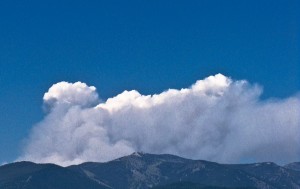 I have spoken before about the pleasures of cloud spotting. They make every adventure outdoors fill with anticipation to see what might be painted on the canvas of the sky. As Gavin Pretor-Pinney says in The Cloudspotter’s Guide, “I’ve always loved looking at clouds. Nothing in nature rivals their variety and drama; nothing matches their sublime, ephemeral beauty.” And this is nearly always true for me as well. Except when the clouds are ominous. I’m not talking about storm clouds, for I actually love all kinds of weather. But this week there was a cloud on the horizon, rising behind Point Six Mountain where the homestead lies. It is the kind of cloud we are seeing every summer now in the west, one full of dread and worry, the billowing, white topped pyrocumulous.
I have spoken before about the pleasures of cloud spotting. They make every adventure outdoors fill with anticipation to see what might be painted on the canvas of the sky. As Gavin Pretor-Pinney says in The Cloudspotter’s Guide, “I’ve always loved looking at clouds. Nothing in nature rivals their variety and drama; nothing matches their sublime, ephemeral beauty.” And this is nearly always true for me as well. Except when the clouds are ominous. I’m not talking about storm clouds, for I actually love all kinds of weather. But this week there was a cloud on the horizon, rising behind Point Six Mountain where the homestead lies. It is the kind of cloud we are seeing every summer now in the west, one full of dread and worry, the billowing, white topped pyrocumulous.
Pyrocumulous clouds form from the column of air rising from a forest fire. In order to create these clouds, the fire must be large, large enough to create strong convection currents that carry any moisture aloft, where it condenses around the particles in the smoke. Forest fires can thus sometimes create their own weather, complete with thunder and lightening.
This particular cloud was the result of a fire burning up north in the Mission Valley. It grew to a size of 1750 acres and caused the evacuations of 21 homes. Living in the west this has become our new reality. We work to thin our forests and create fire safe zones around our homes. Many of us have given a great deal of thought to what we would take in case we need to evacuate and friends of mine who live deep in the woods pack up their treasures every summer, just so they’ll be ready. It is beginning to change the way we think about what we “own,” and the price we are willing to pay to protect it. The loss of 19 firefighters near Yarnell, Arizona this summer is making us question the whole notion of protecting property as a priority for the fire fighters. Agency reports on the incident question one of the primary priorities being that of protecting property. And yet, lawsuits filed against the land management agencies when property is destroyed in a wildfire makes one ponder where the responsibility actually lies.. Add to that the spiraling costs of fighting fires that threaten all the hundreds of thousands of homes built in the urban-wildland interface in the last twenty years and you have to question who ultimately pays the price for someone’s desire to live “in nature.”
In recent discussions about these very issues I hear people changing the way they think about fire and its seeming inevitability in these times. I know that if a fire should break out up at the homestead, I would not want anyone to risk their lives or expend their resources to “save” my property. I will do the thinning required to reduce the chances of fire. I will remove the beetle- killed trees and do what I can to mitigate their damage. But ultimately I know the land is not really my property. It belongs to the mountain and to the forces of nature.
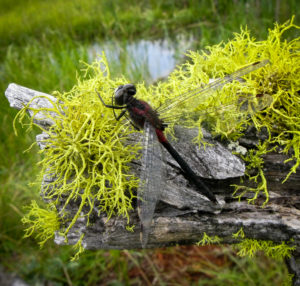 The Montana Natural History Center offers an array of Master Naturalist classes. Once you have completed the intial Master Naturalist series, you can continue your education through a yearly offering of specialized topics. Last week I went on a day long field trip to study dragonflies and damselflies. Of course, every time I’m around water in the summer I can’t help but notice these large insects whizzing by and flitting from plant to plant, but I never realized the diversity of what I was seeing. Two or three different colors, the difference in size between a dragonfly and a damsel fly, maybe. But I was astonished to learn that in Montana alone there are 91 different species, 57 dragonflies and 34 damselflies.
The Montana Natural History Center offers an array of Master Naturalist classes. Once you have completed the intial Master Naturalist series, you can continue your education through a yearly offering of specialized topics. Last week I went on a day long field trip to study dragonflies and damselflies. Of course, every time I’m around water in the summer I can’t help but notice these large insects whizzing by and flitting from plant to plant, but I never realized the diversity of what I was seeing. Two or three different colors, the difference in size between a dragonfly and a damsel fly, maybe. But I was astonished to learn that in Montana alone there are 91 different species, 57 dragonflies and 34 damselflies.
Our guides for the trip, Bob Martinka and Nate Kohler are men obsessed with the order, Odonata, which means ones with teeth. This is because these insects are carnivorous, consuming the insects they catch in mid-light by chewing them to mush in their It is one thing to learn the facts about dragonflies, that their eyes have plus or minus 7,000 lenses, or that they have been around for more than 250 million years, predating the dinosaurs, or that their wings, because they are attached to their bodies by separate muscles, can move independently, which means that they can fly backwards as well as forward, upside down, dive, hover, pivot in a circle and fly up to 30 miles per hour.
But information like that is available to anyone with the click of a mouse. What I took away from the field experience was the infectious enthusiasm for Odonatas that our guides demonstrated. They shared how the desire to find and identify different species can send the naturalist out into far-flung wildernesses and hidden potholes and tarns. No book or web page can give you the experience of being in the field with someone who opens up a world of wonder. Reading cannot give you the sense of slogging through a bog, the feel of walking on sponges suspended in water with the possibility of breaking through at any moment. A list of facts cannot substitute for what it’s like to search the insect filled air for a dragonfly or damselfly and the skill to get just the right swipe, with a twist of the wrist to secure them in you net.
I would never have thought it possible to hold a dragonfly in my hand until Bob showed me how to gently grasp their wings between my thumb and forefinger and peer into their multi-faceted eyes. They taught me how to look for all the identifying markings that will tell you what species you are holding.
And then, having caught their infectious curiosity and enthusiasm, I am off on my own, discovering the place in the tall grasses where the tiny sedge sprites are perching, or seeing, as I track them with my net, how the Dancers bounce around, a little spastically, in flight and flick their wings when they perch, giving me that aha moment as I connect their name to their flight pattern. As I spent the day immersed in the Odonata world, I I began to catch a glimpse into the world Leslie Marmon Silko conveys in Ceremony:
“Dragonflies came and hovered over the pool. They were all colors of blue–powdery sky blue, dark night blue, shimmering with almost black iridescent light, and mountain blue. There were stories babout the dragonflies too. He turned. Everywhere he looked, he saw a world made of stories, the long ago, time immemorial stories, as old Grandma called them. It was world alive, always changing and moving, and if you knew where to look, you could see it, sometimes almost imperceptible, like the motion of the stars across the sky.”
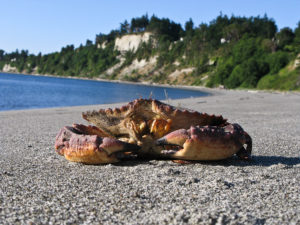 Walking along the beach one morning I found this poor fellow stranded on the sand, far from the tideline ,still on it’s way out. I feel a bit like him, 500 miles from the familiar mountains of home.
Walking along the beach one morning I found this poor fellow stranded on the sand, far from the tideline ,still on it’s way out. I feel a bit like him, 500 miles from the familiar mountains of home.
For days now I have wandered Port Townsend’s long empty beach, fascinated by the salt rimed grasses with their lance sharp leaves cutting through the sand, the calligraphy of seal prints that tell the story of late night forages for food, and the twisted, sea bleached driftwood that has traveled, maybe as far as I have, from where it grew.
Everything is new to me here. I don’t know the names of the shells that lie wave broken on the beach or the lifecycles of the creatures that called them home. Every walk is an adventure and my pockets bulge with bits of sea glass, the occasional half shell still in one piece and iridescent with pale green and blue luster, and whatever bits of floatsum and jetsum that catches my eye. I will make a little arrangement on my desk so that I can appreciate them as I work. It is part of the nesting process I suppose, this urge to create a home, however temporary, in the place you find yourself.
But like the crab, who waves a dispirited claw at me, I am still very conscious of the fact that this is not my home ground. I will always feel “out of place” by the sea. For ten years I lived in Tacoma, happy enough with my family and friends and job, but deep down inside there was a longing, a longing made more intense by the endless grey months of rain, to get back to the mountains where I grew up. To get back to the snow. To get back to brown hills that were not clogged with undergrowth so thick it felt threatening sometimes.
I think everyone has a landscape where they feel as if they have come home. Sometimes it is the place where they grew up, but sometimes they must search until they find that place that sings to their soul. My friend Natasha grew up in London, but inexplicably feels bound to the mountains of Montana. She came, as John Denver said in a song, “home to place I’d never been before.”
My husband, on the other hand grew up by the sea, and after we moved to Montana, he must have felt the same longing I had, but instead it was for rhythm of tides and the smell of briny air and the endless expanse of water where he could roam free in his boat . I am amazed in the generosity of his spirit that he was able to leave the seascape he loves so much, and to be satisfied with no more than regular visits back. Perhaps when we first meet someone we should ask, not what their sign is, but what their landscape is. What is your landscape?
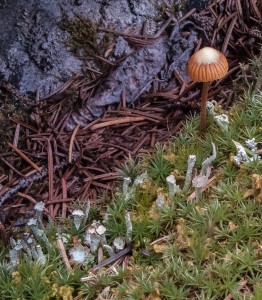 There is a place in the backwoods, down near the river where the trees open into a clearing and the clearing is carpeted in moss. I refer to it as the dying place because often when I go back there a new deer carcass has appeared, hide and bones scattered here and there. It feels like a sacred place, but not a sad place. In spite of the death that happens here, it is such a beautiful, gently quiet place. It’s the perfect place to sit on the soft cushion of moss and listen to the river and watch the herons going back and forth from the rookery, sometimes with gleaming fish in their needle long beaks.
There is a place in the backwoods, down near the river where the trees open into a clearing and the clearing is carpeted in moss. I refer to it as the dying place because often when I go back there a new deer carcass has appeared, hide and bones scattered here and there. It feels like a sacred place, but not a sad place. In spite of the death that happens here, it is such a beautiful, gently quiet place. It’s the perfect place to sit on the soft cushion of moss and listen to the river and watch the herons going back and forth from the rookery, sometimes with gleaming fish in their needle long beaks.
It is also an ideal place to get lost in the miniature world of the moss forest. Robin Wall Kimmerer’s book Gathering Moss has opened my eyes to the complex ecosystem under my feet and opened my mind to a new way of relating to the natural world. Her book is a combination of science and personal reflection, born out of her life as both a scientist and as a Native American writer who experiences the world within the framework of indigenous ways of knowing.
She writes: “In indigenous ways of knowing, we say that a thing cannot be understood until it is know by all four aspects of our being: mind, body, emotion, and spirit. The scientific way of knowing relies only on empirical information from the world, gathered by body and interpreted by mind. In order to tell the mosses’ story I need both approaches, objective and subjective. These essays intentionally give voice to both ways of knowing, letting matter and spirit walk companionably side by side. And sometimes even dance.”
With her encouragement I have taken small samples of the moss back to the house and placed them under the microscope, which allows me to wander at will through the stems, branches and leaves of the moss. There I have an ant’s eye perspective and I’m able to wander in this intimate forest, not in search of answers to any specific questions, but as an explorer open to whatever discoveries I might stumble upon. This is the joy of being an amateur naturalist and not a professional scientist. I am not trying to probe and prod data from the moss, I am simply listening to whatever it has to tell me. I love what Kimmerer says about learning in traditional indigenous communities.
“Learning takes a form very different from that in the American public education system. Children learn by watching, by listening, and by experience. They are expected to learn from all members of the community, human and non. To ask a direct question is often considered rude. Knowledge cannot be taken; it must be given…Much learning takes place by patient observation, discerning pattern and its meaning by experience.”
As I peered into the world revealed under the microscope’s lens, I found a different way of learning, “to let the mosses tell their story, rather than wring it from them.” It is way of learning I hope to carry out into my other explorations of the backwoods and beyond.
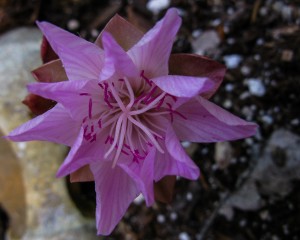 It is the Bitterroot blooming time in Missoula. Their appearance signals the end of the harvesting season for these roots that were one of the main staples in the Native American diet in the region. The fleshy green shoots of rosettes began appearing on the rocky hillsides around town soon after the snow began to melt, beating out even the earliest flowers. The Native Americans traditionally dug the root in May, before the rosette withers away and the flower blooms, because afterwards the woody brown skin on the root is difficult to remove. Among the Flathead and Kutenai Indians of western Montana, a special ceremony honored the Bitterroot and opened the root and berry picking season. Early settlers reported great gatherings of Flathead, Kalispell, Pend d’Oreille, Spokane and Nez Perce tribes camped in the Missoula valley to collect the roots.
It is the Bitterroot blooming time in Missoula. Their appearance signals the end of the harvesting season for these roots that were one of the main staples in the Native American diet in the region. The fleshy green shoots of rosettes began appearing on the rocky hillsides around town soon after the snow began to melt, beating out even the earliest flowers. The Native Americans traditionally dug the root in May, before the rosette withers away and the flower blooms, because afterwards the woody brown skin on the root is difficult to remove. Among the Flathead and Kutenai Indians of western Montana, a special ceremony honored the Bitterroot and opened the root and berry picking season. Early settlers reported great gatherings of Flathead, Kalispell, Pend d’Oreille, Spokane and Nez Perce tribes camped in the Missoula valley to collect the roots.
Lewis and Clark encountered the plant in the Big Hole Valley in 1805. Captain Lewis tried the boiled roots, finding them quite soft, but complained that they had a bitter, nauseating taste. The first time I tried the Bitterroot I too found them bitter, but I rather liked their astringent taste. Bitters have long been used as a way to stimulate the digestive juices and given the Native American’s meat heavy diet, I imagine that the roots were very beneficial.
Jeff Hart, in his priceless book Montana—Native Plants and Early Peoples recounts one of the origin stories of the plant: “Long ago, as the story goes, in what we now call the Bitterroot Valley, Flathead Indians were experiencing a famine. One old woman had to meat or fish to feed her sons. All they had to eat were shoots of balsamroot, and even these were old and woody. Believing that her sons were slowly starving to death, she went down to the river early one morning to weep alone and sing a death song. The sun, rising above the eastern mountains, heard the woman singing. Taking pity on the old woman, the sun sent a guardian spirit in the form of a red bird to comfort her with food and beauty. The bird flew to the old, gray-haired woman and spoke softly. ‘A new plant will be formed,’ said the bird, ‘from you sorrowful tears which have fallen into the soil. Its flower will have the rose of my wing feathers and the white of your hair. It will have leaves close to the ground. Your people will eat the roots of this plant. Though it will be bitter from your sorrow, it will be good for them. When they see these flowers they will say, here is the silver of mother’s hair upon the ground and rose from the wings of the spirit bird. Our mother’s tears of bitterness have given us food…’”
Even as a twenty first century white woman, when I see the blossoms of the Bitterroot, I feel a deep emotional connection to this mother’s story. But more than that, I am struck by the world view this story illuminates. The idea that the natural world is responsive to us in such an nurturing way is so different from our western view of nature being at best indifferent to us, or, at worst, if it does respond it is always in a violent, revengeful way (you shouldn’t fool with mother nature!) What if nature really is both responsive and benevolent and interconnected to us in such an intimate way? It certainly is worth further exploration and reflection.